
Deciding to transition to gray is a big deal. You've moved into a place of acceptance and are ready to show that on the outside.
But, before you take the plunge, it's essential to consider how you want to make the gray hair transition. Lowlighting is becoming a regularly requested service at salons as more and more women move into this new chapter of their lives.
It allows you to go gray gradually and with minimal upkeep. If you want to know all there is to know about transitioning to gray hair with lowlights, then read on!
Table of Contents
- 1 What Are Lowlights?
- 2 How Do Lowlights Work?
- 3 Highlights vs. Lowlights for Gray Transitioning
- 4 Should I Highlight or Lowlight My Gray Hair to Transition?
- 5 How to Transition to Gray Hair With Lowlights in the Salon
- 6 At-Home Instructions for Transitioning to Gray with Lowlights
- 7 When Should You Transition to Gray Hair?
What Are Lowlights?
Lowlights are the opposite of highlights. Instead of having lighter colors placed throughout your hair, you have darker colors. This can help create dimension in your hair and also help camouflage as many of your grays as you want.
Lowlights can be done with any color, but many women choose to go a shade or two darker than their current hair color. This helps the lowlights blend in easily and gives the hair a bit of depth.
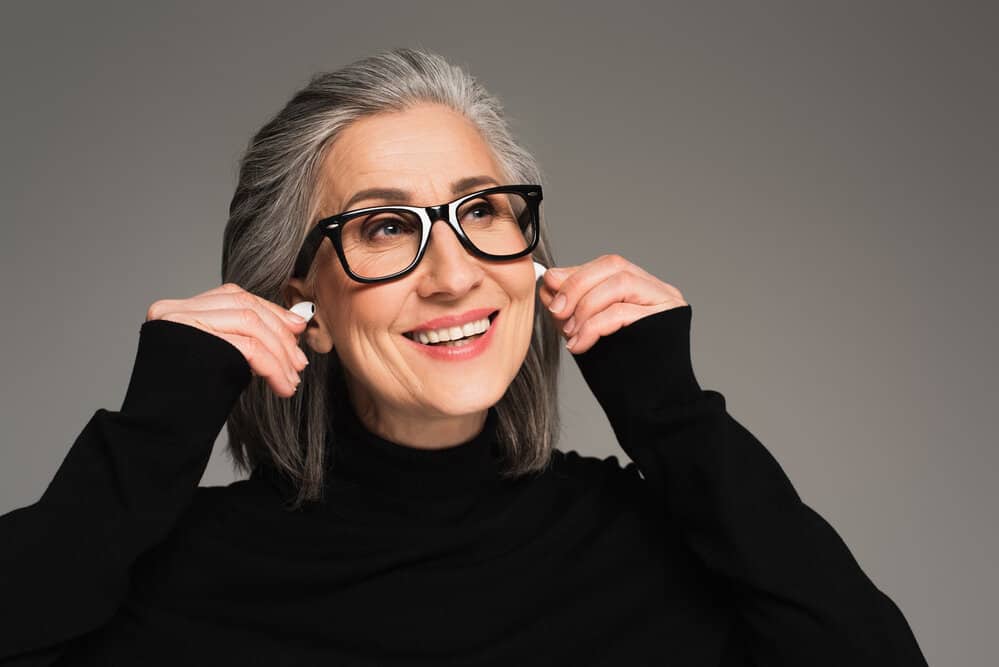
How Do Lowlights Work?
Lowlights are applied the same way that highlights are. Small sections of hair are isolated, and then the color is applied. The lowlights can be as subtle or dramatic as you want them to be.
A lot of women who are transitioning to gray hair choose to go with very subtle lowlights. This allows them to ease into their new hair color transition.
Highlights vs. Lowlights for Gray Transitioning
There are a few critical differences between highlights and lowlights when transitioning to gray hair. The first is that lowlights can help your hair look fuller and thicker, while highlights tend to make hair look thinner.
Your chances of experiencing this are higher if you highlight too much of your hair.
Second, lowlights tend to be more forgiving than highlights when it comes to hair that is graying, as they can help blend in any stray gray hairs - highlights cannot.

Should I Highlight or Lowlight My Gray Hair to Transition?
If you're unsure whether highlights or lowlights are right for you, ask your stylist for their opinion. They will be able to help you decide based on your hair type, the amount of gray you have, and your personal preferences.
But if you’d rather figure it out on your own, we can help. Here are some signs that lowlights are the best way to go gray for you:
- You want a natural look. Adding lowlights to gray hair often results in a much more natural transition than highlights.
- You don't want to use lighteners or other chemicals that can leave your hair damaged.
- You have a lot of gray hair and want to blend your grays into your colored hair.
- You like the idea of adding dimension and depth to your strands.
- You want to camouflage some of your grays, but not all of them.
- You want low maintenance color. Lowlights don't require as much upkeep as highlights, so if you're not into spending a lot of time on your hair, this might be the best option for you.
- You want a quick salon visit. Adding lowlights to your hair is typically a much quicker process than highlights, so if you're short on time, this is definitely the way to go.
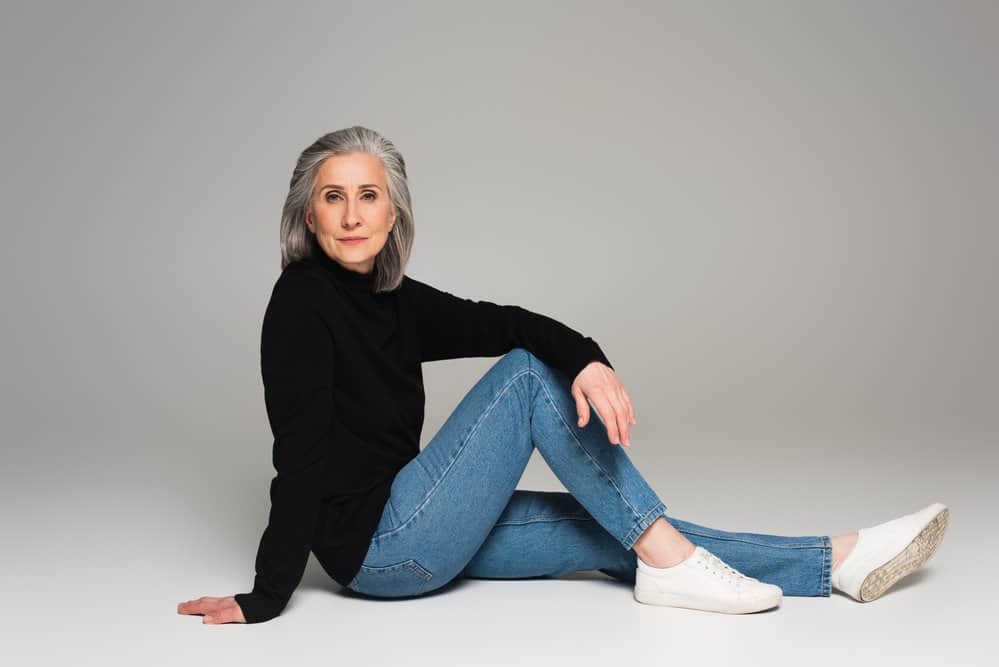
Here are some signs that highlights are the best way to go gray for you:
- You want a dramatic look. If you're looking for a significant change, highlights are definitely the way to go.
- Your hair is reasonably healthy, and you don't mind using lighteners or other chemicals.
Keep in mind that both highlights and lowlights can be used to transition to gray hair, so don't feel like you have to choose one or the other. You can always experiment with both to achieve a look that's unique and complementary to your individual style.
How to Transition to Gray Hair With Lowlights in the Salon
The best thing about getting your lowlights professionally done is it's almost entirely hands-off. Your stylist will be able to take care of just about everything, leaving you to relax and enjoy the process – for the most part.
You're not completely off the hook if you go this route. In this section, we'll tell you what you need to do to get the most out of the transitioning process with professional lowlights.
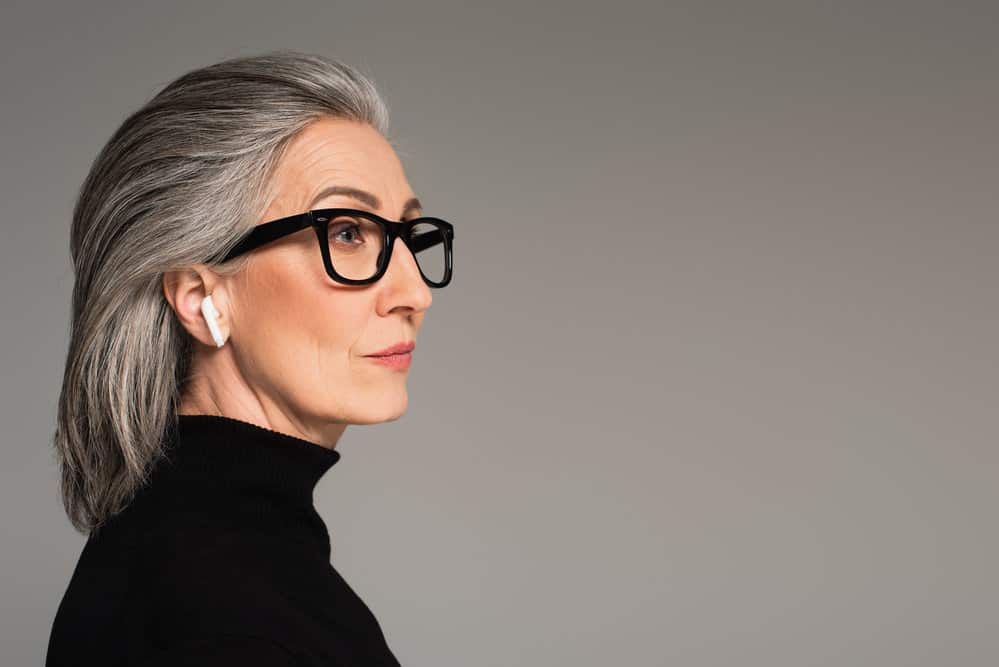
Get in Touch With a Knowledgeable Stylist
Before you book an appointment, it's crucial to find a stylist who is knowledgeable about transitioning to gray hair using lowlights. Once you’ve found a stylist who has experience with this type of transition, ask them lots of questions.
- How long does the lowlighting process usually take?
- What types of dyes do they use?
- How much do they charge for lowlighting?
Book a Consultation
Before you commit to anything, book a consultation with your chosen stylist. This will give you a chance to (1) get to know them better, (2) allow them to get a better idea of your hair type and the amount of gray you have, and (3) communicate your goals for the transition.
You'll be able to show them pictures if you have them and describe in detail the kind of lowlights you're hoping to achieve. That way, they’ll be on the same page as you.

Be Patient
The gray transitioning process can take some time, so patience is key. Depending on how much gray you have, it might take a few appointments and several months before you achieve your desired look. Trust the process!
At-Home Instructions for Transitioning to Gray with Lowlights
If you're the DIY type, you’ll be glad to know that lowlighting your hair at home is an option. This section will give you a step-by-step guide to lowlighting your hair at home.
Before we get started, there are a few things you should know:
- Doing your own lowlights can be tricky. We recommend that you only attempt this if you've dyed your hair before and are okay if things go South.
- This process can take a while, so make sure you have several hours set aside before you start.
- Don't do DIY lowlights right before a special occasion. You never know how your hair will turn out, and you don't want to end up with a disaster on your hands.
Plan Out Your Look
Before you begin the lowlighting process, it's crucial to have a plan. You'll need to decide what kind of lowlights you want and where you want to place them. Use online images to help you plan out your look.
We suggest starting off lowlighting small sections of hair to get a feel for the process before you lowlight your entire head.
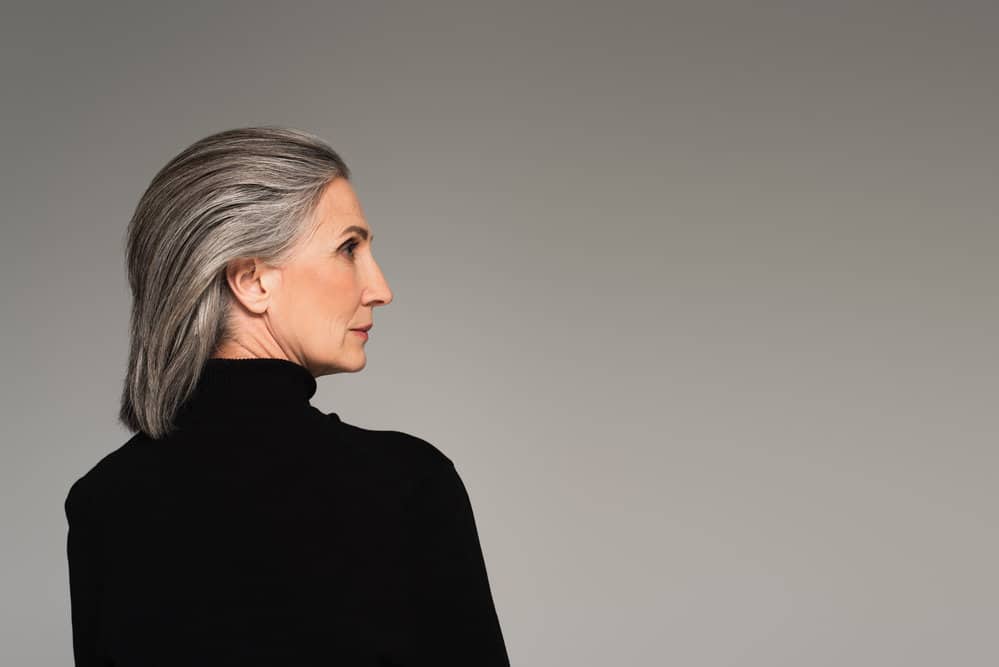
Get Your Supplies
- A bowl and tinting brush for mixing
- A rat-tail comb for parting your hair
- Highlighting foils or a highlighting cap & hook
- A semi-permanent or permanent dye
- Clarifying shampoo
- Conditioner
- Gloves
- Old towels or newspapers
Note on hair dye: Permanent dye will last longer, but semi-permanent dye is gentler on your hair and will wash out quickly.
Since it's your first time lowlighting your hair, we recommend using semi-permanent dye. But if you're feeling daring, you can walk on the wide side with permanent dye.
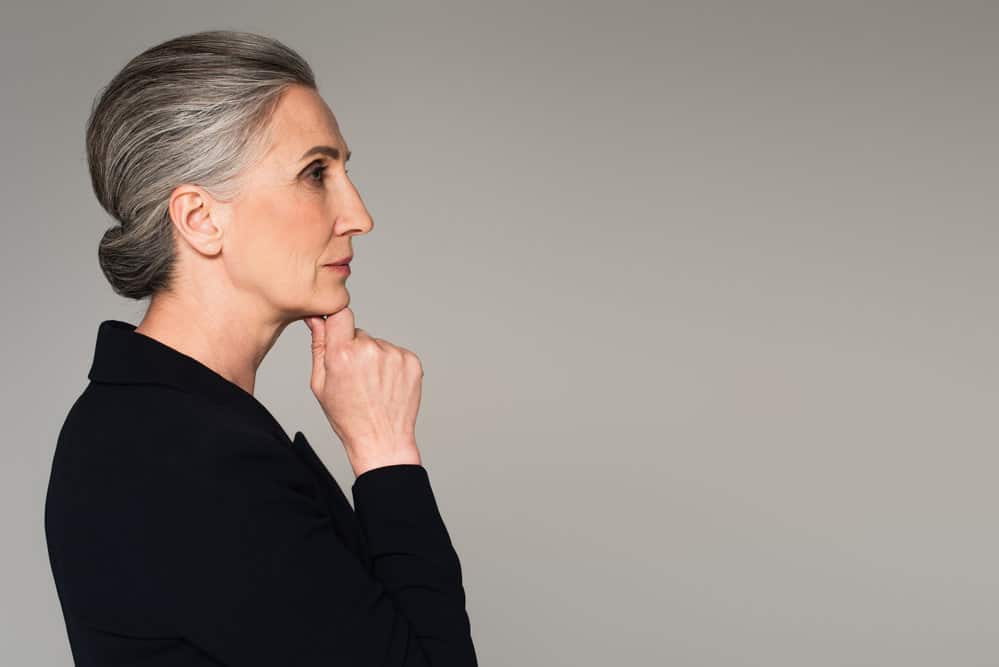
Prepare Your Hair
Now's the time to prepare your hair for lowlighting. You don't want to skip this part, as it's crucial to achieving good results.
Semi-Permanent Dye Hair Prep
Start by shampooing your hair with your clarifying shampoo. Since semi-permanent dye doesn't adhere well to dirty hair, you'll want to ensure it's squeaky clean. Once your hair is clean, blow dry it or braid it up and let it air-dry until it's completely dry.
Permanent Dye Hair Prep
Look at your hair up close and determine whether it's ready for the dyeing process. When using permanent dye, you'll want to ensure that your hair doesn't have a ton of buildup, which could interfere with your results.
If your hair is caked in buildup - maybe you've been putting off wash day, just took down some braids, or used a lot of products - you'll want to clarify it.
You'll apply the shampoo all over your hair, let it sit for a few minutes, then rinse it out. Once your hair is clean, wait 24 to 48 hours for your scalp's natural oils to build up again.
Whether you'll be using semi-permanent or permanent dye, use the rat-tail comb to part your hair into four quadrants and then move to the next step.
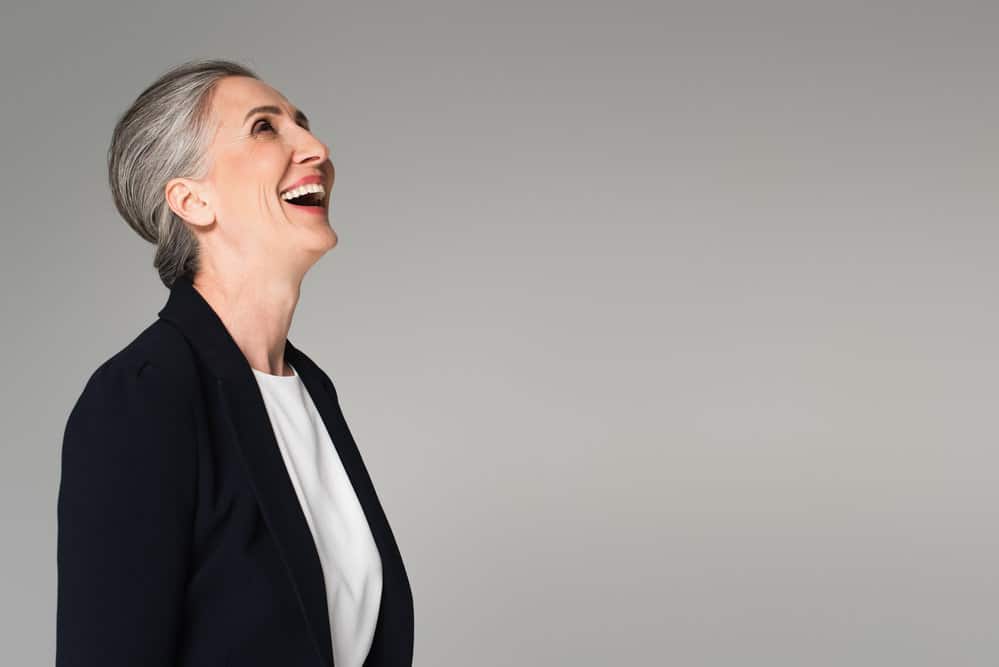
Prepare Your Space
To avoid a lengthy cleanup session later, lay out some newspaper on the floor and your work area. Then put a towel over your shoulders to protect your clothes. We also recommend wearing a shirt that you don’t care about. It will probably get stained.
Mix Your Dye
Follow the manufacturer's instructions to mix your hair dye. For semi-permanent dye, you'll use the dye straight from the tube or bottle. Just dispense it into the bowl and give it a good stir.
For permanent dye, you'll need to mix it with 20 volume developer using a 1:1 ratio before applying it to your hair.

Apply the Dye to Your Hair
There are two ways to apply dye to your hair for lowlights. You can either use highlighting foils or a highlighting cap.
If You’re Using Foils:
Start by taking small horizontal sections of hair and weaving the sharp end of a rat-tail comb in and out of it near your scalp. The comb will grab small pieces of hair as it goes in and out.
These small pieces are what you'll be dyeing.
Put on your gloves, open up a piece of foil, and place it underneath the section of hair you just separated out with the rat-tail comb. Then, using the tinting brush, apply the hair dye to the small pieces of hair.
Fold the foil to cover all the dyed hair, then fold it repeatedly to secure the foil.
If You’re Using a Highlighting Cap:
Put on the gloves that came with your hair dye kit. Next, put on the highlighting cap and then use the included hook to pull small sections of hair through the tiny holes in the cap.
Work your way around your head if you’d like, or focus your lowlights in just one section– it's all up to you.
Once you’ve chosen the sections you want to lowlight, use the tinting brush to apply the dye to the small sections of hair poking through the holes. Don’t press the dye into the cap, or it could bleed onto other sections and ruin your look.
For Both Methods:
After you've applied dye to all of your hair, set a timer for the recommended amount of time (usually 45 minutes or less) and wait for the dye to process.
Once the timer goes off, hop in the shower and rinse your hair with cold water until the water runs clear. Try to rinse the dyed hair separately from your gray hair so there won't be any color transfer.
Once all the dye is out, condition your hair with a color-safe conditioner and style as usual.

Is DIYing Your Lowlights a Good Idea?
If you're considering doing your lowlights at home, it's important to know that this is a process that requires some patience and precision.
But it could be worth it if you're on a budget or trying to achieve a particular look.
If you don't feel comfortable doing it yourself or are worried about making a mistake, it's probably best to leave it to a professional.
How Much Do Lowlights Cost?
Lowlights usually cost between $60 and $150, depending on the salon and the stylist. The price will also depend on the length and thickness of your hair and how much dye is needed.
If you're doing your lowlights at home, you can expect to spend around $20 - $50 on hair dye, developer, gloves, and other supplies.
How Often Should You Get Lowlights?
Lowlights can be done as often as you want, but most people get them every 4 to 8 weeks. If you're using a semi-permanent dye, you can probably get away with doing them every 2 to 4 weeks. You don't want to overdo it, though, or you could end up damaging your hair or developing color buildup.
How to Maintain Lowlights on Gray Hair
Once you've got your lowlights, you might think you're done, but that's not the case. You'll need to take care of them so that they last. Here's how to maintain lowlights on gray hair:
- Use color-safe shampoo and conditioner: These items will help to prolong the life of your lowlights and prevent color fade.
- Avoid hot showers and heat styling: Hot water and heat, in general, can strip color from your hair, so it's best to avoid them when possible. Use a heat protectant before heat-styling your hair.
- Touch up your roots: As your hair grows, the line between your natural hair and your lowlights will begin to show. To prevent this, you'll need to touch up your roots every 4 to 8 weeks.
- Use an after-color sealer: An after-color sealer can help to lock in color and prevent fading. The sooner you use it after coloring your hair, the better.
- Be gentle with your hair: Avoid using harsh chemicals or over-washing your hair, which can strip color and cause damage. Instead, opt for gentle, sulfate-free products.
This isn’t an exhaustive list of tips, and what works for one person may not work for everyone. There’s an element of trial and error that everyone goes through when caring for their hair.
Evaluate how your hair is doing every so often so you can remedy issues early and enjoy your best hair.

When Should You Transition to Gray Hair?
The decision to transition to gray hair is a personal one. Some people are ready to embrace their gray hair as soon as they see it coming in, while others prefer to hold on to their color for as long as possible.
There is no right or wrong answer and no set timeline for when you should transition.
If you’re still on the fence as to whether you’re ready to make the transition, here are some things to consider:
First, consider whether you're ready to let go of your colored hair. If you're not quite prepared to give up your current color, you can try lowlights to ease into the transition.
You should also consider how much effort you're willing to put into maintaining your gray hair. Gray hair can be high maintenance, so you'll need to be prepared to put in the time and effort to keep it looking its best.
If you're ready to transition to gray hair, the best way to do it is gradually. You can start by getting lowlights and slowly letting your natural color grow in.
- How to Remove Permanent Hair Dye From Grey Hair
- Best Developer for Gray Hair
- Why Did My Hair Get Darker
No matter how you transition to gray hair, the most important thing is to do what makes you feel comfortable and confident. We hope that the information in this article has given you the confidence to make the transition to gray. Good luck!




